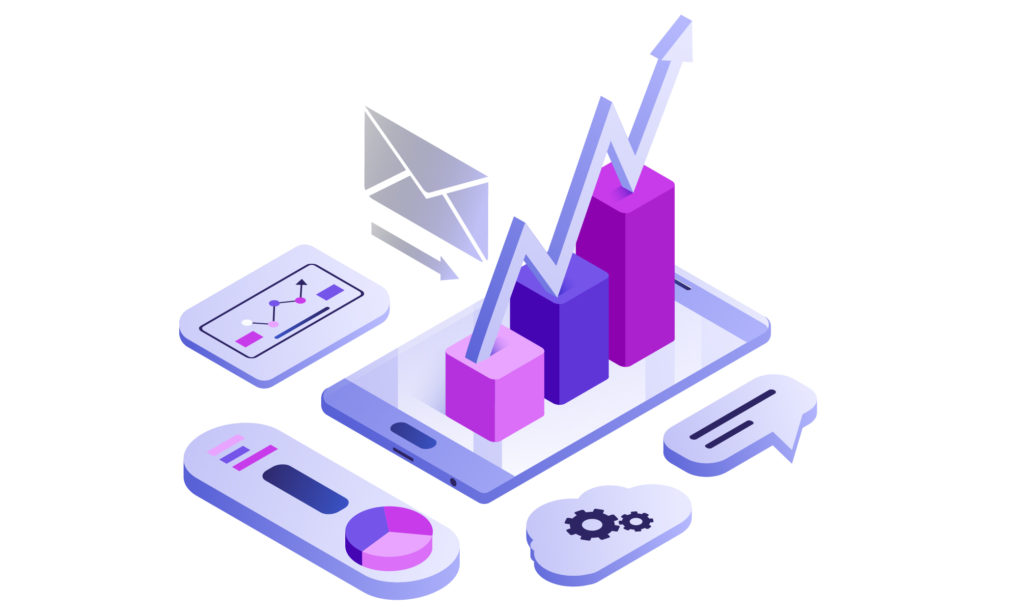
The IoT industry has observed rapid development in the last few years. It is expected to reach $1.11 trillion by 2026 at a 24.7% compound annual growth rate (CAGR). This high-growth opportunity is increasingly being adopted by different industries to streamline their business functions. The banking industry has been traditionally known to be human-centric, slow and obsolete. However, in recent years, IoT in banking is gradually gaining prominence. As a result, banks and financial institutions modernized and automated all their obsolete functions, resulting in higher growth. Additionally, connected devices have given banks the leverage to collect valuable consumer data and use the same to personalize the offerings to customers.
Benefits of IoT in banking
IoT in banking and finance has helped these industries go digital. With technology becoming an inherent part of the banking industry, customers have become the recipients of superior and faster service, which wasn’t possible pre-IoT. Some of the benefits of IoT in banking include:
1. Improved banking experience

One of the primary benefits of IoT in banking and finance is the superior experience that customers can receive. When banks implement IoT in their systems, they create opportunities to provide their customers with an enhanced service. Internet of things allows banking personnel to use in-depth insights and data to fulfil all customer obligations in a time-bound manner. Additionally, IoT also allows the extensive personalization of offerings, thereby enabling banks to customize their offerings and marketing communication to add some value to their customers. For instance, IoT in banking has allowed the creation of mobile banking apps which provides customers with the ease and convenience to access their transactions and details as and when required.
2. Product Launch

Banks are rapidly expanding their functions and coming up with new products and verticals. The success of a new product launch can be a dicey issue. An effective new product launch depends upon substantial data about the market and competitors. One of the benefits of IoT in banking includes the factor that it allows the accumulation of valuable data from various sources. For instance, with IoT, banks can gather customer data from mobile apps as well as past activities of the customer. Based on such insights, the marketing department can draw up plans regarding the target audience, channels of communication of the new launch, the right time to launch the product etc.
3. Chatbots

Chatbots have been implemented in almost every industry to streamline their operations and drive positive results. Chatbots are a cost-effective method of replacing repetitive functions and providing superior service to customers. Banking customers require and want immediate and timely responses for their queries, irrespective of timezone or geographical location. This isn’t possible in the case of human resources. Chatbots use natural language processing (NLP) to interact with customers and provide them with timely service. In addition, chatbots can also gather data based on customer interactions, which can be used to provide customers with a personalized experience. Timely and personalized customer service helps in retaining customers and improving the reputation of the bank or financial institution.
4. Improved Efficiency

Superior customer service depends upon the efficiency of the banking system. While banks are notorious for their slow and inefficient responsiveness, IoT in banking is changing this ideology. With IoT, Banks can stay ahead of customer expectations without any excessive expenditure on employee hiring and training. Artificial intelligence, natural language processing, chatbots, automation and machine learning can easily replace repetitive manual functions, to make the entire banking system smoother and faster. This is especially the case for branch banking, where there are several interconnected bank branches, all finally connected to a head bank. Irrespective of which bank branch a customer visits, IoT technology can gather their data as soon as they enter the branch, enabling bank employees to provide the customer with a highly customized and relevant experience.
The benefits of IoT in banking are manifold. With IoT, banks can leverage the unlimited potential of artificial intelligence, automation, machine learning etc to provide a value-added service to their customers. With the increased usage of connected devices by customers, it is vital that banks use IoT to capture customer data and use the insights to design personalized offerings for their customers.
Read on to know why IoT is important for your business




About The Author: Deepak
More posts by Deepak